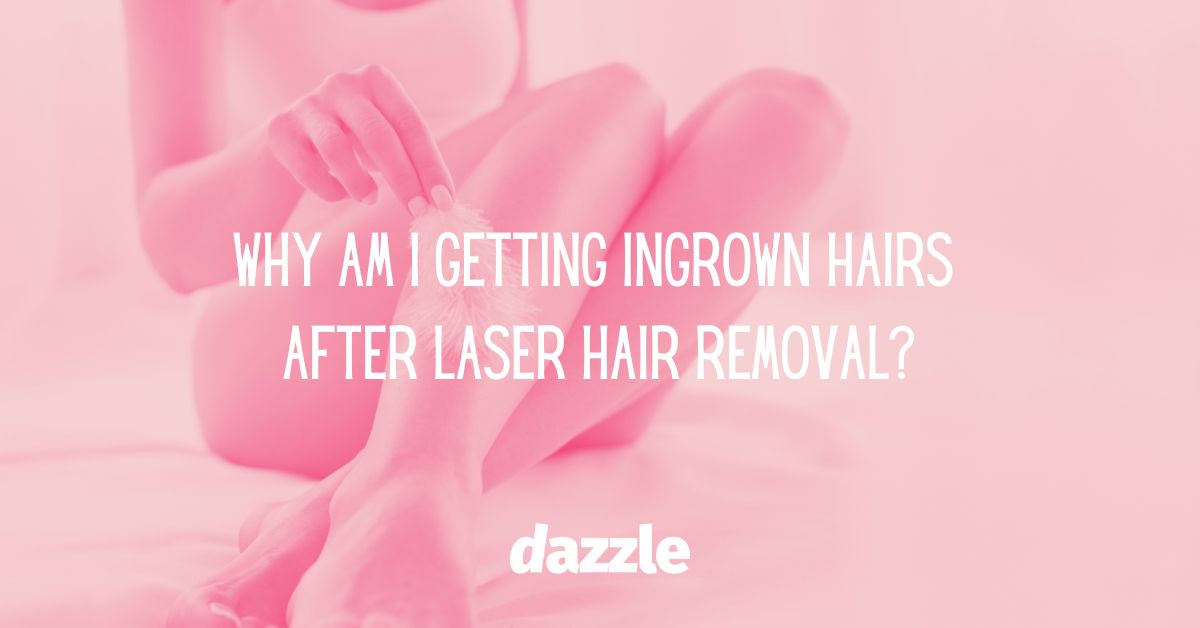Laser hair removal can sometimes cause ingrown hairs. This often happens when the laser targets the hair follicle and damages it, resulting in hairs to grow inwards instead of outwards. However, this is less likely to happen with newer laser technologies that have a longer wavelength and can penetrate deeper into the skin, targeting hair follicles without damaging the surrounding skin.
What causes ingrown hairs after laser hair removal?
Ingrown hairs can occur after laser hair removal due to several factors:
- When hair follicles become damaged during the laser treatment, the hair can become trapped under the skin and this causes ingrown hairs to form.
- Additionally, improper shaving techniques after laser hair removal, such as shaving too closely to the skin or in the wrong direction, can naturally also lead to ingrown hairs.
- Furthermore, individuals with coarse or curly hair are more prone to developing ingrown hairs.
To prevent ingrown hairs after laser hair removal, exfoliating the treated area regularly can help to remove dead skin cells and prevent hair from becoming trapped under the skin.
How can I prevent ingrown hairs after laser hair removal?
To prevent ingrown hairs after laser hair removal, it is best to exfoliate regularly, both before and after treatment. Exfoliation helps to remove dead skin cells that can trap hairs beneath the skin’s surface. It is also essential to keep the skin moisturized, as dry skin can exacerbate ingrown hairs. If you like tight clothes, avoid wearing those tight-fitting clothing directly after a laser hair removal session since that can rub against the skin.
How long does it take for ingrown hairs to go away after laser hair removal?
After laser hair removal, it is normal to experience some ingrown hairs, but they usually disappear within a 1-4 weeks. The exact duration depends on the individual’s skin and hair type, as well as the location and extent of the treatment. However, applying warm compresses or using exfoliating treatments can help speed up the healing process. Because laser hair removal targets the hair follicles, it can cause temporary irritation, but this eventually subsides.
Always follow the post-treatment care instructions provided by your technician to prevent or minimize the occurrence of ingrown hairs, and if they do occur, refrain from shaving or waxing and apply proper aftercare products.
Is it common to have ingrown hairs after laser hair removal?
It is not uncommon for individuals to experience ingrown hairs after laser hair removal. Ingrown hairs occur when hair grows back into the skin instead of out of the follicle. To reduce the risk of ingrown hairs after laser hair removal, follow the steps outlined above and always follow proper pre-treatment and post-treatment care. Use the appropriate laser for your skin type and hair color, and stay consistent with follow-up treatments.

